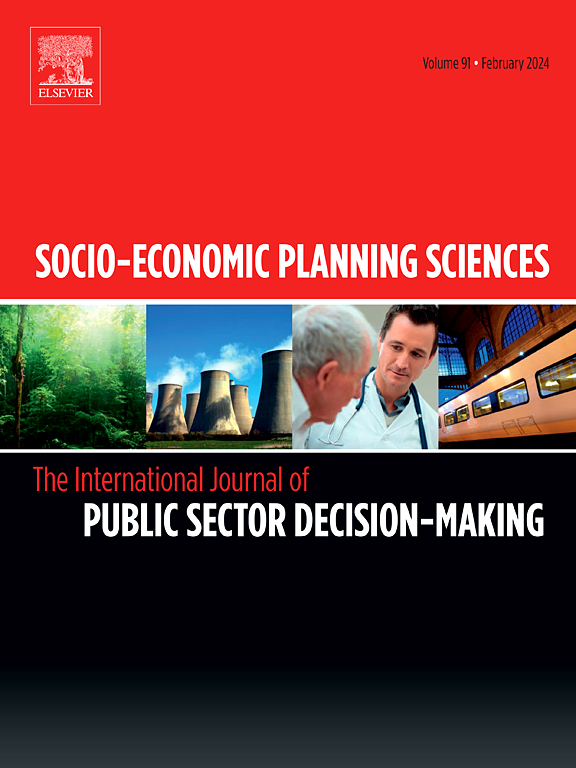揭示结构变化的决定因素:长期动态的机器学习方法
IF 5.4
2区 经济学
Q1 ECONOMICS
引用次数: 0
摘要
本研究旨在通过无监督和有监督机器学习(ML)技术的新组合解决分类问题,分析2000年至2021年间结构变化(SC)的决定因素。这些技术有助于训练两种二元逻辑算法(LAs),以预测国家的长期潜在结构变化趋势(SC)。本研究中使用的机器学习技术包括主成分分析(PCA)、验证集(VS)方法、重采样方法以及两种基准算法的训练,以评估可解释性和预测准确性之间的权衡。此外,还使用了支持性ML技术,包括特征选择(FS)、SHAP (SHapley加性解释)值、基于Lorenz zonoid的方法和正则化来增强可解释性和模型精化。研究结果证明了SC系统方法的经验相关性,以及预测因子触发导致系统性转变的累积因果机制的潜力,并预测了各国走向SC过程或其停滞和衰退的长期趋势。指标表明,人工智能具有较强的预测和分类能力,预测精度范围为0.87 ~ 0.97,受试者工作特征曲线下面积范围为0.93 ~ 0.96,约登指数范围为0.79 ~ 0.93。该研究的发现为SC领域提供了经验、可操作和方法上的启示。本文章由计算机程序翻译,如有差异,请以英文原文为准。

Unveiling structural change determinants: A machine learning approach to long-term dynamics
This research aims to analyze the determinants of structural change (SC) between 2000 and 2021 by solving a classification problem via a novel combination of unsupervised and supervised machine learning (ML) techniques. These techniques facilitate training two binary logistic algorithms (LAs) that predict countries' long-term latent tendencies toward structural change (SC). The ML techniques employed in this study included principal component analysis (PCA), the validation set (VS) approach, the resampling approach, and the training of two benchmark algorithms to assess the trade-off between interpretability and prediction accuracy. In addition, supportive ML techniques including feature selection (FS), SHAP (SHapley additive explanations) values, the Lorenz Zonoid-based approach, and regularization, were used to enhance interpretability and model refinement. The findings demonstrate the empirical relevance of the SC's system approach and the predictors' potential to trigger cumulative causation mechanisms that engender systemic transformations and predict the long-term trends of countries toward an SC process or its stagnation and decline. The metrics indicate that the LAs demonstrate a notable capacity for prediction and classification, with a range of prediction accuracies from 0.87 to 0.97, an area under the receiver operating characteristic curve from 0.93 to 0.96, and a Youden index from 0.79 to 0.93. The study's findings offer empirical, actionable, and methodological implications for the SC field.
求助全文
通过发布文献求助,成功后即可免费获取论文全文。
去求助
来源期刊

Socio-economic Planning Sciences
OPERATIONS RESEARCH & MANAGEMENT SCIENCE-
CiteScore
9.40
自引率
13.10%
发文量
294
审稿时长
58 days
期刊介绍:
Studies directed toward the more effective utilization of existing resources, e.g. mathematical programming models of health care delivery systems with relevance to more effective program design; systems analysis of fire outbreaks and its relevance to the location of fire stations; statistical analysis of the efficiency of a developing country economy or industry.
Studies relating to the interaction of various segments of society and technology, e.g. the effects of government health policies on the utilization and design of hospital facilities; the relationship between housing density and the demands on public transportation or other service facilities: patterns and implications of urban development and air or water pollution.
Studies devoted to the anticipations of and response to future needs for social, health and other human services, e.g. the relationship between industrial growth and the development of educational resources in affected areas; investigation of future demands for material and child health resources in a developing country; design of effective recycling in an urban setting.
 求助内容:
求助内容: 应助结果提醒方式:
应助结果提醒方式:


